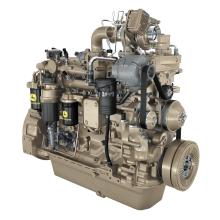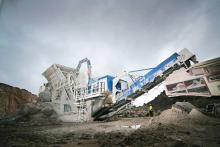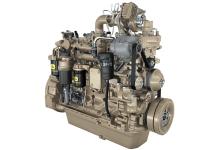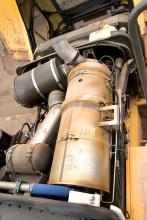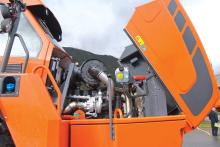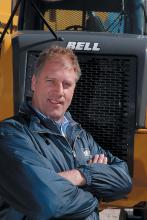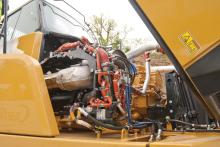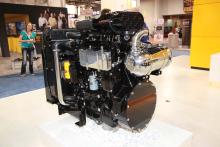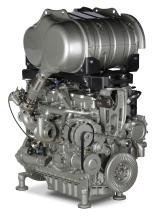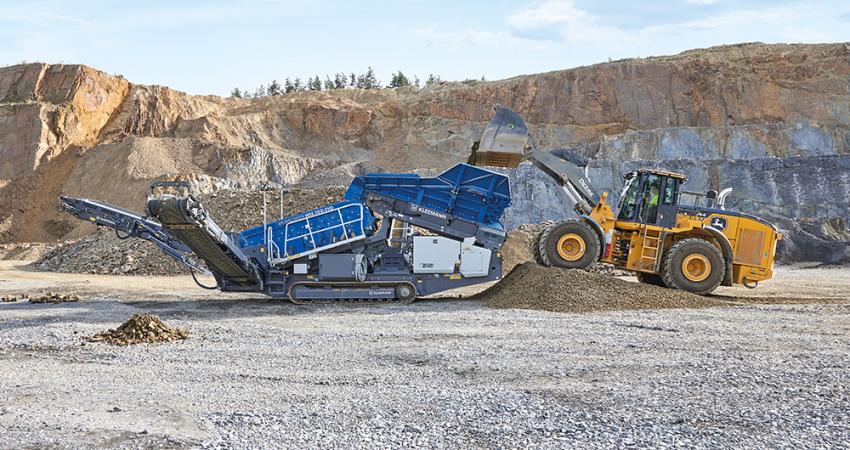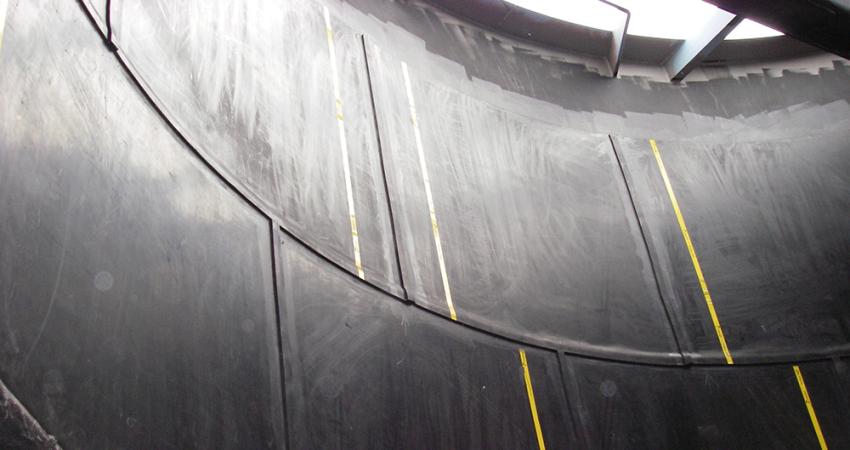
Many construction equipment manufacturers will be launching new machines or upgrading existing models this year to comply with the latest emissions regulations. Dan Gilkes takes a look at the new legislation.
The quarry and aggregates industry is no stranger to regulation and legislation - from health and safety to site planning, every step of the mineral extraction process is examined and recorded in some way. For many in the business however, the biggest change to the way in which we work this year will come from outside the quarry sector.
The off-highway machinery business is once again striving to meet new and increasingly strict emissions legislation, as the industry moves to Stage IIIB standards in the
Fortunately for the engine and equipment manufacturers these two global standards are now almost identical, as the amounts of noxious gases have been cut over the years to very low levels.
They are also very close to Canada's Tier 4 regulations and Japan's Step 4 rules, making it possible for engineers to strive for a single unified objective in regulated markets.
Taking a step back for a minute though, there are a number of things that engineers have to deal with, and meeting the targets is certainly not getting any easier or less expensive. Oxides of nitrogen (NOx) are harmful gases that form when fuel is burned with air. Particulate matter (PM) is the soot associated with diesel exhaust emissions. Hydrocarbons (HC) are gaseous compounds resulting from unburned fuel and engine oil in the exhaust system, and carbon monoxide (CO) is a harmful gas that is produced when the carbon in the fuel is not fully burnt.
Though governments have concentrated very much on CO and HC when it comes to the cars on our roads, diesel engines are actually not the big problem for these gases. Truck and off-highway legislation has therefore concentrated on NOx and PM.
The industry has already come a long way. Just 30 years ago one on-highway truck would have produced the same amount of PM as 50 trucks today, while NOx has been reduced by more than 90% over the same time. The big problem for the engineers though, is that most of the actions taken to reduce NOx, in turn increase PM, and vice versa.
Tier 4 Interim/Stage IIIB call for a 90% reduction in PM compared to Tier 3/Stage IIIA, and a 50% drop in NOx emissions. Tier 4 Final/Stage IV will call for a further 80% reduction in NOx.
There are several steps that all engine manufacturers have had to take to clean up the burning process within the engine to meet these levels. These include higher cylinder pressures and increased airflow, achieved through the use of four valve heads, increasingly complex turbocharging, along with after- and intercooling.
Fuel injection pressures have also increased greatly, initially through the use of electronic pumps and unit injection, but more latterly by employing high pressure common rail systems.
However there comes a point where you simply cannot clean up the combustion process any further, and you then have to look at after treatment of the exhaust gases that are exiting the cylinder. One way has been to take some of that gas and route it back through the engine, in what is called exhaust gas recirculation (EGR).
The other methods involve cleaning the gases after they leave the engine, using diesel oxidation catalysts (DOC) through selective catalytic reduction (SCR), and incorporating diesel particulate filters (DPF) into the exhaust system.
However the PM builds up within these filters and has to be burnt off through regeneration, which can be passive or active depending on the system. In addition SCR requires the injection of a 32.5% urea solution, in Europe commonly known as AdBlue.
Solutions
Manufacturers have come at these solutions from various directions, though some like
"Meeting Tier 4 Interim legislation is a massive challenge but also a huge opportunity for innovation, an opportunity to come up with a solution that has real advantages for our customers," said JCB director of engine programmes Alan Tolley.
"Our strategy therefore has been to meet Tier 4 Interim emission standards without a DPF, but also to achieve this without any exhaust after treatment. We have focused our research and development efforts on a high efficiency combustion system. This approach also gives us very low fuel consumption levels, up to 10% lower than for Tier 3."
CNH companies
These technologies have both been well proven by Fiat's on-highway truck brand Iveco, so there should be few concerns for customers in the off-highway market.
Both
Of course many manufacturers don't have in-house engine development, opting instead to buy in the latest technology from the likes of
The US engine giant used this year's ConExpo show in Las Vegas to reveal a complete line-up of Tier 4 Interim engines, from a 3.3 litre motor with 60hp (45kW) to a 15 litre offering 600hp (447kW).
The six cylinder QSB6.7, QSL9, QSX11.9 and QSX15 all sit above 173hp (129kW), so had to comply with Tier 4 Interim/Stage IIIB legislation since 1 January 2011.
"Equipped with next generation systems such as XPI (extra high pressure) fuel injection and VGT turbochargers, the QSX engines are ready to move forward to meet Tier 4 Final near-zero emissions in 2014 with minimal change," said executive director of Cummins' Off- Highway Business Hugh Foden. Cooled EGR is a feature of the full range, with the Cummins Particulate Filter said to offer 99% passive regeneration and no loss of performance. Indeed Cummins claims that all of the engines deliver improved performance and better fuel consumption than the motors that they replace.
With the regulations moving down to lower powered engines on January 1 2012, the QSB3.3 and QSB4.5, along with some of the lower powered QSB6.7 ratings use a Cummins Compact Catalyst to remove PM. This catalyst is fully passive and is essentially a fit and forget item.
Completing the line-up, the B3.3 engine, at 60-74hp (45-55kW) meets Tier 4 Interim without the need for any exhaust after treatment.
On Site
So what does the regulation change mean for the contractor on site? The first thing to consider is fuel. Tier 4 Interim/ Stage IIIB engines require an ultra low sulphur diesel (ULSD) with a sulphur content of 15 parts per million or less.
Fuels with a higher sulphur content can damage engine components and cause problems for the owner. In addition most manufacturers, Cat, Volvo and Cummins included, are calling for the use of low ash engine oils, as they are more resistant to heat and allow the DPF to reach a mandated 4,500 hour ash cleaning interval.
While this won't be too much of a problem for developed countries, where ULSD is now commonplace, it may present potential problems for those companies that move equipment around the world to work.
Manufacturers will continue to produce engines to meet the lower emissions regulation in these parts of the world, but take a Tier 4 machine to a country without ULSD, and you will have to take the fuel with you.
This does of course present something of a problem for the used equipment market too, as buyers in less developed countries and those without ULSD will be less keen to buy up second-hand equipment with Tier 4 Interim/Stage IIIB engines, as it is not possible to remove the emissions equipment which is integral to the engine design.
Given that most European quarries will have access to ULSD, there is also AdBlue to consider for those machines with an SCR system. Again Adblue is readily available, as most road trucks now use it too. It does however require a second tank on the machine that will have to be regularly filled on site, though not at the rate that you refuel with diesel.
In terms of service and maintenance, basic fluid and filter changes should remain unchanged. However there will be a need on some engines for a crankcase filter to be cleaned or replaced, and some DPFs will require the operator's involvement to regenerate and clear out ash and soot.
The addition of SCR and DPFs also adds to the designers' problems, as both systems call for an increase in cooling potential. On a road haulage truck the problem is not as bad, as the vehicle is moving through the air at speed, helping to cool the radiators and cooling cores. On a relatively static machine however, such as an excavator or a dozer, there is no rapid flow of air through the coolers, so they will have to be larger with improved cooling fans to blow air through.
It is also important to manage heat dissipation, as some after treatment systems call for temperatures to be maintained throughout the exhaust, right to the tailpipe.
Efficiency
The one bit of good news for customers, is that so far most Tier 4 Interim/Stage IIIB engines seem to be both more powerful and around 5-10% more fuel efficient than their predecessors, boosting productivity and reducing operating costs. They will of course be more expensive to buy however, as the emissions kit does not come cheap.
Emissions regulation is not just here to stay, but will continue to force increasingly stringent measures on engine and equipment manufacturers going forwards, at a cost that will have to be passed on to customers. Of course the benefit should be cleaner air for us all, so it is hard to complain.
Those contractors purchasing new equipment this year should check on the engine specifications and their fuel and oil requirements. Build that into your operating and maintenance programmes, and there shouldn't be a problem on site.

